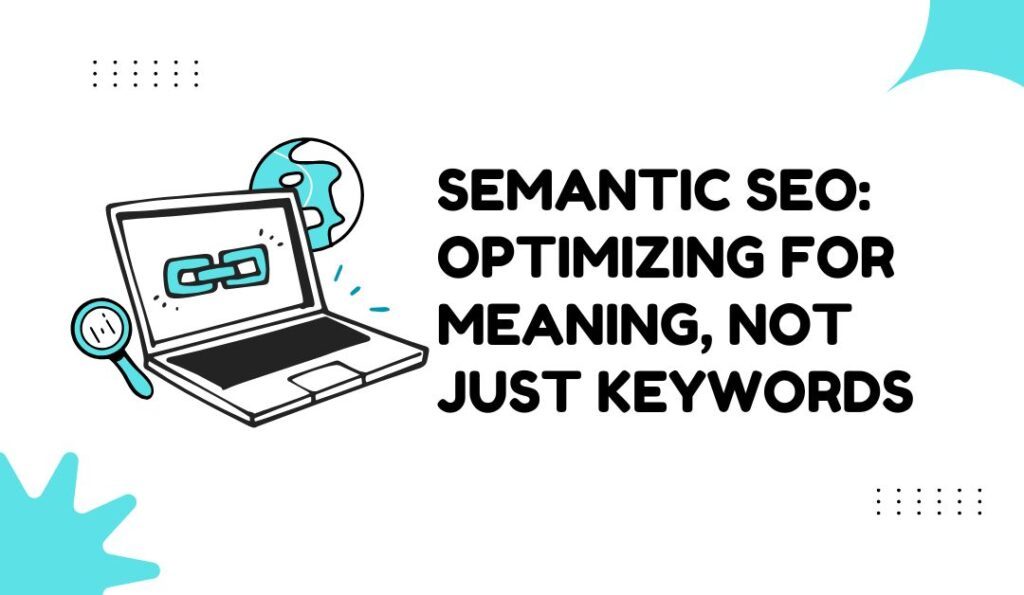Imagine you’re at a huge party where everyone speaks different languages and tells different stories. To join the fun, you need to understand the ideas and emotions behind each talk, not just spot familiar words. That’s what semantic SEO does for your website: it helps search engines grasp the real meaning of your content instead of just matching exact keywords.
What Does Semantic SEO Mean?
Semantic SEO is all about context and user intent. Traditional SEO focused on sprinkling exact keywords into your text—like “best pizza recipe” or “how to fix a bike.” Semantic SEO goes deeper. It uses related terms, synonyms, and natural language so that search engines can understand the full picture of what you offer. When your content truly answers someone’s question or need, search engines reward you with better visibility.
Why Search Engines Care About Meaning
Search engines such as Google have evolved. They no longer just look for exact words on a page. They use advanced technologies like deep learning and knowledge graphs to understand topics and relationships. For example, if your page talks about “steam rising from a hot mug,” Google figures out you’re describing a hot drink, even if you never say “tea” or “coffee.” This ability to connect ideas makes search results more helpful for users.
How Semantic SEO Helps Your Website
- Better User Experience
When your content speaks naturally, people find it easier to read and learn. Clear explanations, real-life examples, and varied vocabulary keep readers engaged and encourage them to spend more time on your site. - Higher Search Rankings
Search engines reward pages that demonstrate expertise and relevance. By covering topics comprehensively—using related words like “brewing,” “flavor,” or “mug types”—you show search engines that you fully understand your subject. - Voice Search Optimization
More people now ask questions out loud, saying things like “Where can I find a quick breakfast idea?” instead of typing “breakfast recipes.” Semantic SEO helps you capture these conversational queries by including natural language and question-and-answer formats. - Reduced Keyword Stuffing
Instead of awkwardly repeating the same phrase over and over, semantic SEO encourages you to use diverse wording. This not only sounds better to readers but also avoids penalties from search engines for unnatural repetition.
Getting Started with Semantic SEO
1. Research Topics, Not Just Keywords
Begin by exploring your main topic from many angles. If you write about “plant care,” list related ideas like “watering schedule,” “soil types,” “sunlight needs,” and “pest prevention.” This gives you a roadmap of concepts to cover in your content.
2. Use Natural Language
Write the way people speak. Instead of “benefits of meditation practice,” try “how meditation helps you feel calm.” Natural phrasing aligns with how users input queries, especially with voice assistants.
3. Create Topic Clusters
Group your content into clusters: one main page that covers a broad subject and several supporting pages that dive into subtopics. Link them together. For example, a main “guide to bike maintenance” page can link to separate articles on “changing a flat tire,” “oil for bike chains,” and “choosing the right helmet.”
4. Leverage Structured Data
Structured data (or schema markup) adds a layer of meaning by tagging pieces of your content. If you review a movie, you can tag the title, director, release date, and rating. This helps search engines display rich snippets—eye-catching search results that drive clicks.
5. Answer Questions Directly
Identify the common questions your audience asks. Use headings like “What is semantic SEO?” and provide clear answers immediately beneath. This format can earn you featured snippets, the boxed answers at the top of Google search results.
Tools and Techniques for Semantic SEO
- Natural Language Processing (NLP) Tools: Platforms like Google’s Natural Language API can analyze your text and suggest improvements to enhance clarity and topic coverage.
- LSI Keyword Tools: Latent Semantic Indexing (LSI) keyword generators help you find related terms that enrich your content beyond primary keywords.
- Content Analysis Platforms: Services such as Surfer SEO or MarketMuse compare your pages to top-ranking competitors and guide you on topic depth and structure.
Common Pitfalls to Avoid
- Over-Optimization: Don’t cram every related term into a single paragraph. Spread them naturally throughout your article.
- Ignoring User Intent: Focus on what your readers actually need. If they want to “learn simple yoga poses,” don’t write a technical paper on yogic philosophy.
- Skipping Updates: Semantic SEO evolves. Regularly review and update your content to include new related topics and to reflect current best practices.
Case Study: How an SEO company Boosted Traffic
A small online bookstore teamed up with a specialist SEO company in Chennai to improve its rankings. Instead of targeting only “buy books online,” the team created a series of articles about “choosing the right genre for beginners,” “how to gift books,” and “books that spark creativity.” They added structured data for reviews and ratings. Within three months, organic traffic rose by 45%, and the site began appearing in featured snippets for queries like “best books for creative writing.”
Measuring Your Semantic SEO Success
- Organic Traffic Growth: Track how many new visitors arrive from search engines each month.
- Keyword Rankings: Monitor not only your primary keywords but also related terms and question phrases.
- Dwell Time and Bounce Rate: Higher dwell time (time on page) and lower bounce rate indicate that readers find your content meaningful.
- CTR for Rich Snippets: Check if your pages earn featured snippets or other enhanced search result features.
Advanced Tips for Experts
- E-E-A-T Focus: Emphasize Experience, Expertise, Authoritativeness, and Trustworthiness. Link to reputable sources and showcase your own credentials.
- Semantic Topic Modeling: Use machine learning tools to analyze large sets of text and discover hidden topic relationships you might overlook.
- International SEO: Tailor your content to multiple languages and cultures, ensuring semantic nuances are accurate across translations.
Future of Semantic SEO
Search engines will only get smarter. As artificial intelligence and machine learning advance, they’ll understand nuances like sarcasm, humor, and cultural references. To stay ahead, focus on creating genuinely helpful, well-structured content that answers real questions and guides users step by step.
As voice search, mobile devices, and smart assistants become more popular, the way people look for information will continue to change. Semantic SEO ensures your website remains relevant by matching the true meaning behind those evolving queries.
Bringing It All Together
Semantic SEO is not a quick trick—it’s a mindset. It shifts focus from counting keywords to crafting meaningful, helpful content. By researching topics broadly, writing naturally, using structured data, and addressing user intent, you create a site that both search engines and real people love.
If you’re ready to transform your approach and move beyond old-school keyword stuffing, remember that every article, blog post, or product page is an opportunity to teach, guide, and connect. Start small, measure your results, and refine your strategy. Over time, you’ll build a web presence that stands out not because of clever keywords, but because of genuine value.
Whether you’re a hobby blogger or a large business looking for expert guidance in digital marketing in Chennai, embracing semantic SEO will help you reach your audience more effectively. Keep learning, keep optimizing, and let meaning lead the way.













